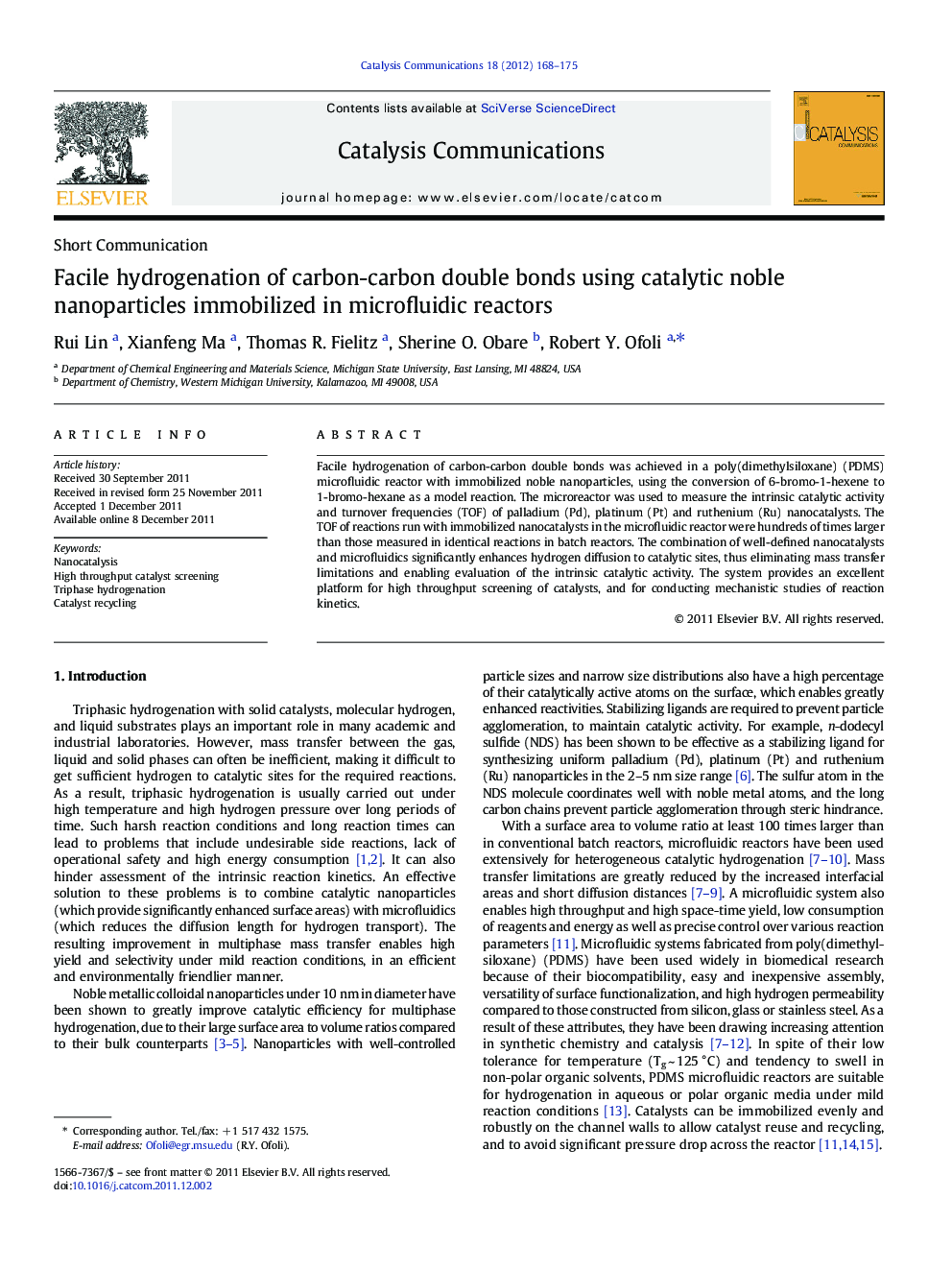| Article ID | Journal | Published Year | Pages | File Type |
|---|---|---|---|---|
| 50104 | Catalysis Communications | 2012 | 8 Pages |
Facile hydrogenation of carbon-carbon double bonds was achieved in a poly(dimethylsiloxane) (PDMS) microfluidic reactor with immobilized noble nanoparticles, using the conversion of 6-bromo-1-hexene to 1-bromo-hexane as a model reaction. The microreactor was used to measure the intrinsic catalytic activity and turnover frequencies (TOF) of palladium (Pd), platinum (Pt) and ruthenium (Ru) nanocatalysts. The TOF of reactions run with immobilized nanocatalysts in the microfluidic reactor were hundreds of times larger than those measured in identical reactions in batch reactors. The combination of well-defined nanocatalysts and microfluidics significantly enhances hydrogen diffusion to catalytic sites, thus eliminating mass transfer limitations and enabling evaluation of the intrinsic catalytic activity. The system provides an excellent platform for high throughput screening of catalysts, and for conducting mechanistic studies of reaction kinetics.
► Synthesis of monodisperse Pd, Pt and Ru nanocatalysts by thermal decomposition. ► Robust protocol for nanocatalyst immobilization in sealed microfluidic reactors. ► Reactor configuration for significantly enhanced mass transfer to catalytic sites. ► Capability for determination of intrinsic turnover frequencies. ► Potential for high throughput screening of catalysts.
